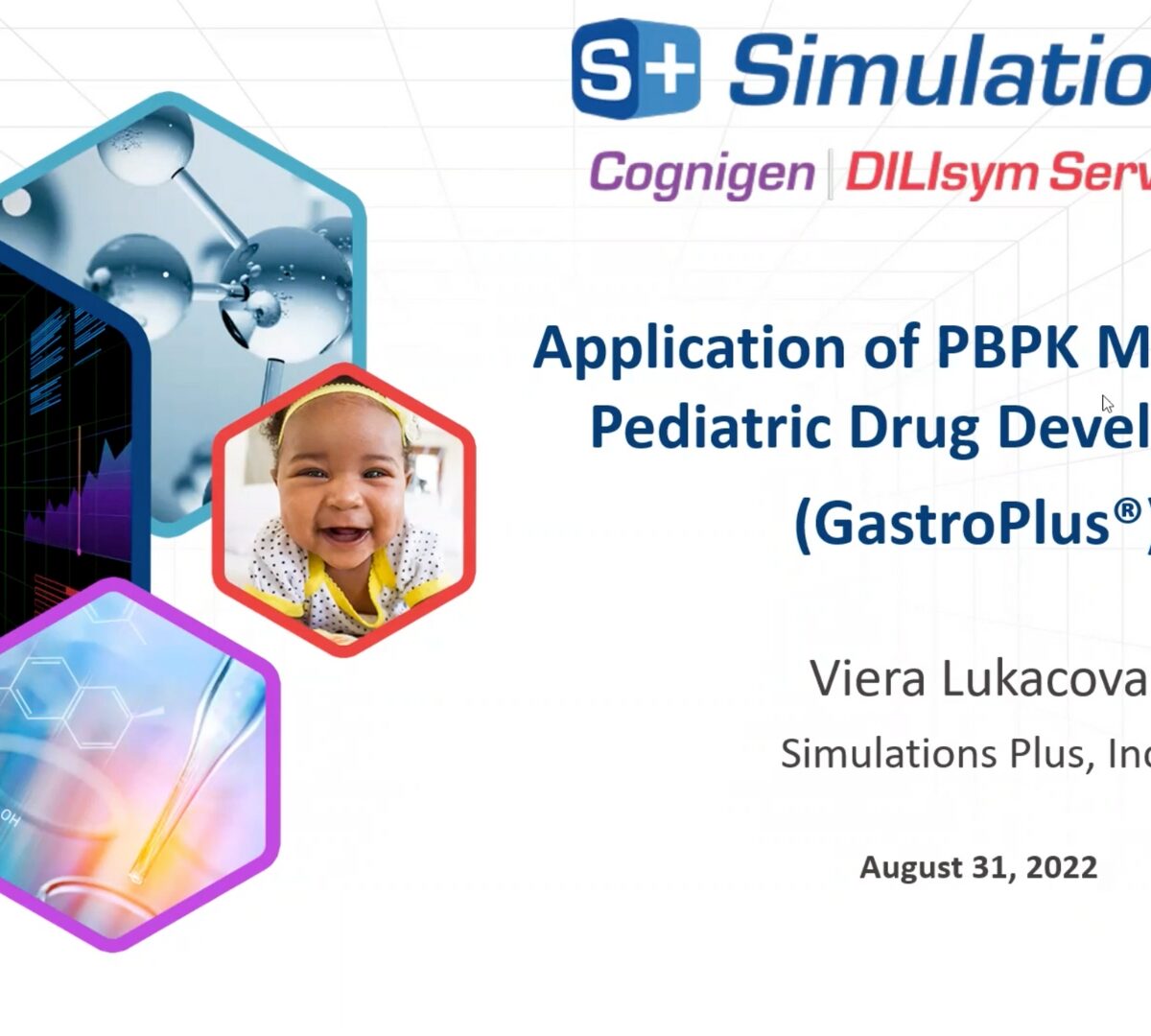Ketoprofen is registered in many countries for injectable administration in cattle.

Physiologically based Pharmacokinetic Models under the Prism of the Finite Absorption Time Concept
To date, mechanistic modeling of oral drug absorption has been achieved via the use of physiologically based pharmacokinetic (PBPK) modeling, and more specifically, physiologically...

Simulations Plus Releases State-of-the-Art QSP Software for Interstitial Lung Disease
ILDsym will enable new software and services revenue by aiding development of therapies for the treatment of patients with ILD as a complication of systemic sclerosis

Application of PBPK Modeling in Pediatric Drug Development (GastroPlus®)
Role of PBPK in Pediatric Drug Development

Physiologically Based Biopharmaceutics Model for Selumetinib Food Effect Investigation and Capsule Dissolution Safe Space – Part I: Adults
A physiologically based biopharmaceutics model (PBBM) was developed to mechanistically investigate the effect of formulation and food on selumetinib pharmacokinetics.

Metabolism of 3-Chlorobiphenyl (PCB 2) in a Human-Relevant Cell Line: Evidence of Dechlorinated Metabolites
Lower chlorinated polychlorinated biphenyls (LC-PCBs) and their metabolites make up a class of environmental pollutants implicated in a range of adverse outcomes in...

Simulation of Intraluminal Performance of Lipophilic Weak Bases in Fasted Healthy Adults Using DDDPlusTM
The majority of drug candidates exhibit weakly basic characteristics with high lipophilicity.

Simulation of Intraluminal Performance of Lipophilic Weak Bases in Fasted Healthy Adults Using DDDPlusTM
The majority of drug candidates exhibit weakly basic characteristics with high lipophilicity. The risk of intraluminal compound precipitation has been studied in vivo...

Physiologically based pharmacokinetic modeling of daptomycin dose optimization in pediatric patients with renal impairment
Daptomycin is used to treat Gram-positive infections in adults and children and its dosing varies among different age groups.

August 2022 GastroPlus Newsletter
As the summer season heats up here in New England, we invite you all to join us in honoring 2022 World Lung Cancer Day.

In Vitro–In Vivo Relationship in Mini-Scale—Enabling Formulations of Corallopyronin A
In vivo studies in mice provide a valuable model to test novel active pharmaceutical ingredients due to their low material need and the fact that mice are frequently used as a species...

Reliance is key to effective access and oversight of medical products in case of public health emergencies
Responding to new threats and public health emergencies (PHE) creates serious challenges to regulators.

Multi-method global sensitivity analysis of mathematical models
Increasingly-sophisticated parameter-sensitivity analysis techniques continue to be developed, and each technique...

Simulations Plus Enters New Collaboration to Enhance Machine Learning Models for Ionization Constants (pKa)
Extensive data sharing with large pharmaceutical partner will expand property prediction space and improve model performance

Tissue regeneration effect of betulin via inhibition of ROS/MAPKs/NF-ĸB axis using zebrafish model
Betulin is the primary anti-inflammatory component of Betula platyphylla suk. cortex (birch bark), a time-honored Traditional Chinese Medicine (TCM) for healing trauma...

Nanoclay-Based Composite Films for Transdermal Drug Delivery: Development, Characterization, and in silico Modeling and Simulation
Purpose: Halloysite nanotubes (HNTs) are a versatile and highly investigated clay mineral due to their natural availability, low cost, strong mechanical strength, biocompatibility, and binding properties.

Case study on the impact of the source of metabolism parameters in next generation physiologically based pharmacokinetic models: Implications for occupational exposures to trimethylbenzenes
Physiologically based pharmacokinetic (PBPK) models are a means of making important linkages between exposure assessment and in vitro toxicity. A key constraint on rapid...

August 2022 News/Events
An estimated 236,740 people in the U.S. will be diagnosed with lung cancer in 2022. That’s 649 people each day, 27 people each hour, and one person every 2½ minutes.

Recent trends in pharmaceutical analysis to foster modern drug discovery by comparative in-silico profiling of drugs and related substances
Pharmaceutical drug analysis (PDA), besides quantifying drugs and related substances (RS), can enrich drug discovery (DD) by suggesting new leads. PDA may...

Next Gen Tech for QST/QSP & PBPK Modeling
Simulations Plus is excited to share some technical advances that have been made to two of the feature models developed by the DILIsym Services division!

